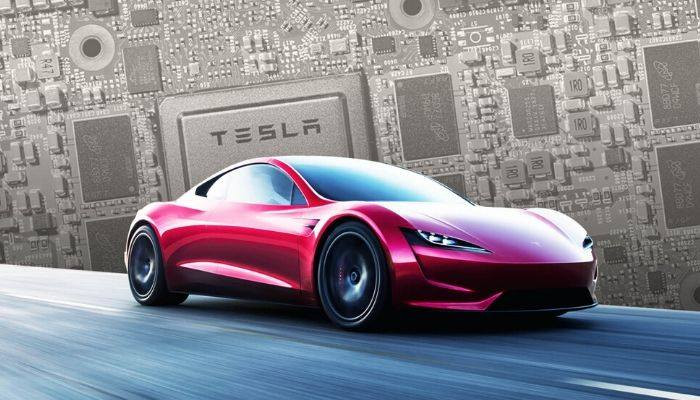Definition of Luxury and Elegance
Luxury and elegance are terms often used interchangeably but have distinct meanings. Luxury refers to items or experiences that are of the highest quality, exclusive, and often expensive. These may include products, services, or experiences that are considered superior to others in terms of craftsmanship, design, and prestige. Elegance, on the other hand, pertains to the gracefulness, sophistication, and tasteful richness found in something or someone. An elegant product or experience exudes simplicity yet sophistication, unobtrusive beauty, and refined excellence. When combined, luxury and elegance encapsulate an aura of exclusivity and appeal that transcends mere material worth.
The Importance of Luxury in Modern Culture
In the modern world, luxury items and brands are not just about affluence and opulence; they signify social status, success, and identity. The desire for luxury items has permeated various aspects of culture and society, influencing not only consumer behaviour but also art, design, and even philosophical discourse. Luxury brands become symbolic, allowing individuals to communicate their unique identities, tastes, and values. Moreover, luxury has a profound impact on economies, driving innovation, employment, and contributing significantly to global markets. Understanding luxury and its role in modern culture is therefore essential in comprehending broader societal trends and consumer dynamics.

Understanding the Pillars of Luxury Brands
a. Quality and Craftsmanship
Quality and craftsmanship stand as two defining pillars of luxury brands. A luxurious item isn’t simply manufactured; it’s meticulously crafted. The attention to detail, the use of the finest materials, and the skill and artistry of craftsmen all contribute to the unparalleled quality of luxury products. This high level of craftsmanship ensures not only aesthetic appeal but also durability and functionality, making these items timeless pieces of art. Whether it’s a hand-stitched leather bag or a perfectly cut diamond, the emphasis on quality and craftsmanship differentiates luxury items from mass-produced goods.
b. Exclusivity and Rarity
Exclusivity and rarity are synonymous with luxury. The allure of something being scarce or available to only a select few adds to its luxury quotient. Limited editions, unique designs, or products crafted with rare materials create a sense of uniqueness and individuality. These elements create a barrier that separates luxury from mainstream products, providing an air of mystery and prestige. This exclusivity often drives demand and creates a desire among consumers to possess something that is rare and distinctive.
c. Aesthetics and Design
Luxury brands invest significantly in aesthetics and design, ensuring that each product is not only functional but also beautiful and elegant. The design of luxury items often involves innovation, creativity, and a deep understanding of aesthetics. This might include an elegant simplicity in some products or intricate detailing in others. The use of colours, textures, shapes, and materials is done with great care and consideration, allowing for a harmonious blend of form and function. Aesthetics in luxury brands isn’t just about visual appeal; it’s about engaging all the senses and creating an experience that resonates with the consumer on an emotional level.
d. Historical Legacy and Brand Heritage
The historical legacy and heritage of a brand play a vital role in defining its luxury status. Many luxury brands have a rich history, steeped in tradition and culture. These stories and origins add layers of meaning and value to the products. Heritage often connects a brand to a specific time, place, or craft, lending authenticity and depth to its narrative. A brand’s legacy might include iconic products, significant innovations, or associations with notable figures. These historical connections not only establish credibility but also create an emotional connection with consumers, adding to the mystique and allure of the brand.
The pillars of luxury brands encompass a multifaceted array of elements that combine to create the essence of what we perceive as luxury. These aspects go beyond mere price or material wealth, delving into realms of quality, exclusivity, aesthetics, and heritage that resonate with human desire, emotion, and identity. Understanding these pillars is essential for appreciating the complex and nuanced nature of luxury in today’s world.
The Role of Branding in Luxury
a. Creating an Emotional Connection
The creation of an emotional connection is a cornerstone of branding in the luxury sector. Luxury brands aim to transcend the functional attributes of their products, crafting a relationship with the consumer that resonates on a deeper, emotional level. The buying decision often hinges not just on the product itself but on what the brand represents – its values, its heritage, and the feeling it invokes. Whether it’s a sense of prestige, nostalgia, or simply the joy of owning something exquisite, luxury brands strive to create a unique experience that lingers in the hearts and minds of consumers.
b. Influence of Celebrities and High-profile Endorsements
Celebrities and high-profile endorsements play a significant role in the luxury branding landscape. The association of a well-known face with a luxury brand can magnify its appeal and broaden its reach. Celebrities often embody the characteristics that a brand wishes to portray – elegance, success, exclusivity. By aligning with a celebrity who resonates with these traits, luxury brands create a powerful narrative that reinforces their image. These endorsements can also lend credibility and aspiration to a product, making it more appealing to a wider audience, and strengthening the brand’s position in the marketplace.
c. Impact of Advertising and Social Media
In today’s digital age, advertising and social media are powerful tools in shaping the image and perception of luxury brands. Carefully curated advertising campaigns that highlight a brand’s essence, exclusivity, and elegance can create a lasting impression. Meanwhile, social media allows luxury brands to engage with consumers in a more personal and interactive manner. Platforms like Instagram, Facebook, and X (formerly known as Twitter) offer opportunities to showcase products, share behind-the-scenes insights, and even provide exclusive access to events or launches. Social media also provides a space for consumers to share their experiences and interact with the brand, further fostering the emotional connection and community that modern luxury brands strive to cultivate.

In summary, the role of branding in the luxury segment is multifaceted and extends beyond mere promotion or visual appeal. It’s about weaving a story that connects with consumers on an emotional level, using various tools and strategies to craft an image that resonates with the essence of luxury. From creating profound emotional connections to leveraging the power of celebrities and embracing the opportunities of digital platforms, branding plays a vital role in defining and maintaining the luxurious allure of a brand. The mastery of these elements helps luxury brands stay relevant, admired, and sought-after in an ever-competitive market landscape.
Consumer Perception of Luxury
a. The Psychology Behind Luxury Consumption
Understanding the psychology behind luxury consumption is crucial in grasping why luxury items hold such appeal. For many consumers, luxury isn’t merely about owning an expensive item; it’s about fulfilling deeper psychological needs. These can include the desire for self-expression, affirmation of personal success, or the pursuit of perfection and excellence. Luxury items often serve as symbols of one’s identity, values, or achievements, aligning with a person’s self-concept and desired social image. Furthermore, the thrill of acquiring something rare or exclusive can stimulate a sense of pleasure and reward, reinforcing the attractiveness of luxury.
b. The Role of Status and Prestige
Status and prestige play a significant role in shaping consumer perception of luxury. Owning a luxury item is often viewed as a marker of success and social standing. Whether through an iconic logo, distinctive design, or renowned craftsmanship, luxury products allow individuals to signal their status to others. This association with prestige often enhances the perceived value of the item, as it carries with it an unspoken acknowledgement of taste, success, and discernment. As such, luxury becomes more than a personal indulgence; it becomes a social communicator, reflecting an individual’s place within or aspiration towards a particular social echelon.

c. Consumer Expectations and Satisfaction
Luxury brands are often met with high consumer expectations, reflecting the premium they command. Consumers expect not only superior quality and craftsmanship but also an exceptional buying experience. From personalised services to exclusive access to new collections, the expectations extend beyond the product itself into the realms of service, packaging, and even the in-store environment. These heightened expectations are an integral part of the luxury proposition, and meeting or exceeding them is essential for ensuring consumer satisfaction. When these expectations are met, it reinforces the brand’s image and strengthens the consumer’s emotional connection with the brand. Conversely, failure to meet these expectations can tarnish the brand’s reputation, underscoring the delicate balance that luxury brands must maintain.

Consumer perception of luxury is a complex interplay of psychological needs, social dynamics, and heightened expectations. Understanding these facets is vital for luxury brands as they navigate the intricacies of what makes something truly luxurious in the eyes of the consumer. The allure of luxury lies not just in its tangible attributes but in its ability to resonate with the intangible desires and aspirations of the individual, reflecting a nuanced understanding of human nature and society. It’s this multifaceted appeal that continues to fuel the desire for luxury, making it a compelling and ever-evolving aspect of modern consumer culture.
Conclusion
a. Summary of Key Findings
Throughout this exploration of what defines elegance and makes a brand truly luxurious, several key findings have emerged. The luxurious essence of a brand is a multifaceted concept, underpinned by quality craftsmanship, exclusivity, aesthetic appeal, and a rich historical legacy. The branding strategies employed by luxury brands, including creating emotional connections and leveraging celebrity endorsements, play a vital role in shaping perception and appeal. Furthermore, consumer perception of luxury is intricately tied to psychological needs, status, prestige, and elevated expectations. Together, these findings weave a comprehensive picture of the complexity and allure of luxury in the modern world.
b. Future Trends in Luxury Branding
The landscape of luxury branding is dynamic and subject to continuous evolution. Looking forward, several trends are likely to shape the future of luxury. Sustainability and ethical considerations are becoming increasingly important, with consumers seeking brands that align with their values. The integration of technology, including virtual reality and AI-driven personalisation, may enhance the luxury buying experience. Additionally, the notion of ‘accessible luxury’ is emerging, offering a blend of exclusivity and accessibility that caters to a broader audience. These trends point to a future where luxury continues to adapt and innovate, reflecting the changing desires and values of society.
c. Implications for Businesses and Consumers
The insights garnered from this exploration hold significant implications for both businesses and consumers. For businesses, understanding the nuanced dynamics of luxury is crucial in crafting strategies that resonate with consumers, maintaining brand prestige, and fostering growth in an increasingly competitive market. Embracing emerging trends and aligning with consumer expectations can enhance brand value and loyalty. For consumers, the evolving nature of luxury offers opportunities to engage with brands that reflect their individuality, values, and aspirations. It invites them to partake in experiences that transcend mere ownership, enriching their lives through the pursuit of elegance, quality, and exclusivity.
In closing, the study of luxury and elegance within branding is not merely an examination of opulence and extravagance; it is a profound exploration of human desires, societal values, and the timeless pursuit of excellence. By deconstructing the elements that comprise luxury and analysing their interconnectedness, this paper offers valuable insights and foresight into a phenomenon that continues to captivate and inspire. Whether a business leader seeking to navigate the intricate landscape of luxury branding or a consumer drawn to the allure of elegant exclusivity, understanding what makes a brand truly luxurious is a nuanced and ever-relevant endeavour.




